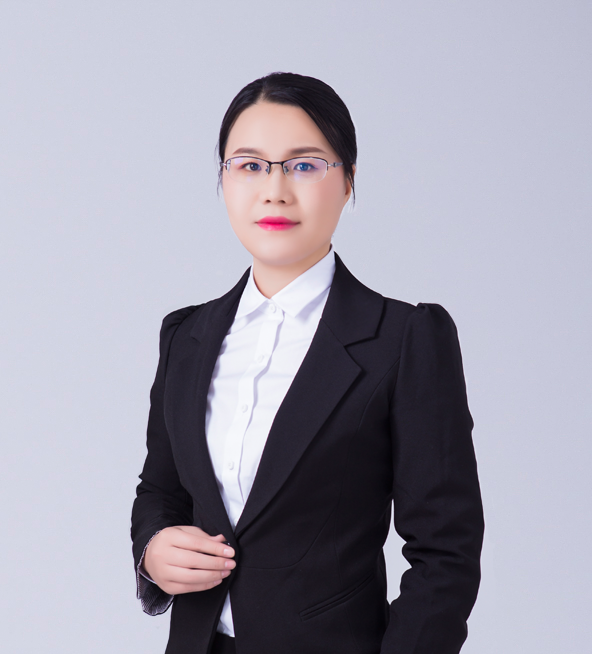


PROFILE OF THE CASE
The client, OMS Investment Company, has applied for registering the trademark No. 60117851 “ ” (English: AeroGarden) (hereinafter referred to as the applied trademark) on Class 1 "Fertilizer; Chemical fertilizer; Potting soil; Canned peat for gardening; Plant growth regulator; Phytonutrients;” was rejected by China National Intellectual Property Administration (CNIPA), the ground for rejection is that the trademark and other party’s prior trademark No. 21201359 “
” (English: AeroGarden) (hereinafter referred to as the applied trademark) on Class 1 "Fertilizer; Chemical fertilizer; Potting soil; Canned peat for gardening; Plant growth regulator; Phytonutrients;” was rejected by China National Intellectual Property Administration (CNIPA), the ground for rejection is that the trademark and other party’s prior trademark No. 21201359 “![]() ” (Chinese character: Meng Xin Wo Yuan) constitute similar trademarks on similar goods. OMS lodged an appeal against the decision and filed an application for refusal of review with the CNIPA. Recently, the CNIPA issued a decision of rejection and review.
” (Chinese character: Meng Xin Wo Yuan) constitute similar trademarks on similar goods. OMS lodged an appeal against the decision and filed an application for refusal of review with the CNIPA. Recently, the CNIPA issued a decision of rejection and review.
DECISION OF THE CNIPA
After hearing, the CNIPA determined that there was a certain difference between the trademark application and the trademark No. 21201359 "![]() " (Chinese character: Meng Xin Wo Yuan) in terms of word composition, pronunciation, visual effect, etc., and that the coexistence of the use of the two trademarks would not cause confusion and misrecognition by the consumers, and that the trademarks of the two parties did not constitute similar trademarks used in the same goods or similar goods.
" (Chinese character: Meng Xin Wo Yuan) in terms of word composition, pronunciation, visual effect, etc., and that the coexistence of the use of the two trademarks would not cause confusion and misrecognition by the consumers, and that the trademarks of the two parties did not constitute similar trademarks used in the same goods or similar goods.
ANALYSIS OF THE CASE
The above case is a typical case to determine whether a combination of design marks constitutes a similar trademark.
We are of the opinion that although both trademarks contain the design of "leaves", the applied-for trademark and the cited trademark should not be recognized as similar trademarks. The grounds are as follows: Firstly, the English word "AeroGarden" in the applied-for mark and the Chinese character "蒙新沃源" (Chinese in Pinyin: Meng Yuan Wo Xin) in the cited mark are the main recognizable parts of the marks of the two parties. The difference in writing, pronunciation and meaning between the English word "AeroGarden" and the Chinese character "蒙新沃源" (Chinese in Pinyin: Meng Yuan Wo Xin) is obvious and there is no relationship between Chinese and English, which is sufficient for consumers to distinguish them; secondly, the two parties' "leaves" are existing things in nature, which is a public resource, and any person can reasonably use them, and the two parties' "AeroGarden" and the cited mark "蒙新沃源" (Chinese in Pinyin: Meng Yuan Wo Xin) are the main identifying parts of the two marks. Anyone can reasonably use, and the two sides of the "leaves" graphics basically retained the basic form of the leaf graphics, and does not have a unique form, does not have a strong creative, not by the owner of the cited trademark exclusive use; Finally, the two sides of the trademark designated for use in the "fertilizers; plant fertilizers Finally, the parties' trademarks are designated to be used on goods such as "chemical fertilizers; plant fertilizers", and the function of "chemical fertilizers; plant fertilizers" is to provide nutrients for all kinds of plants, which are directly applied to all kinds of plants, including "leaves", in order to promote the growth of the plants, and therefore, "leaves" is the most important trademark in China. As "leaves" are the direct object of the goods of both parties, the leaf graphic, as a component of the trademark, is less distinctive, and it is not appropriate to grant the owner of the cited trademark the right to monopolize the use of the graphic element of "leaves". Thus, the applicant trademark and No. 21201359 "![]() " cited trademark (Chinese character: Meng Xin Woyuan) word composition, pronunciation, visual effect and other aspects of the difference, co-existence and use will not cause confusion and misrecognition of consumers, the two trademarks do not constitute the use of the same or similar goods in the same or similar trademarks.
" cited trademark (Chinese character: Meng Xin Woyuan) word composition, pronunciation, visual effect and other aspects of the difference, co-existence and use will not cause confusion and misrecognition of consumers, the two trademarks do not constitute the use of the same or similar goods in the same or similar trademarks.
SIGNIFICANCE OF THE CASE
The value of a trademark lies in distinguishing the source of goods or services, not in allowing the prior trademark registrant to monopolize certain indications. In determining whether trademarks containing common words and graphic elements commonly used in the industry or in the public domain of society constitute similar trademarks, the limited nature of the public resources of society and the distinctiveness of the main identifying parts of the trademarks should be positively considered to avoid monopoly registration and use of the public resources by the prior trademark registrant, and to allow the registration and use of the later trademarks under the circumstance that the differences between the two parties' trademarks in the overall word composition, pronunciation and visual effect are fully considered. The registration and use of the later trademark shall be permitted with due consideration of the differences in the overall word composition and visual effect of the two trademarks.
 业务领域:
业务领域: 此案件代理人
此案件代理人
